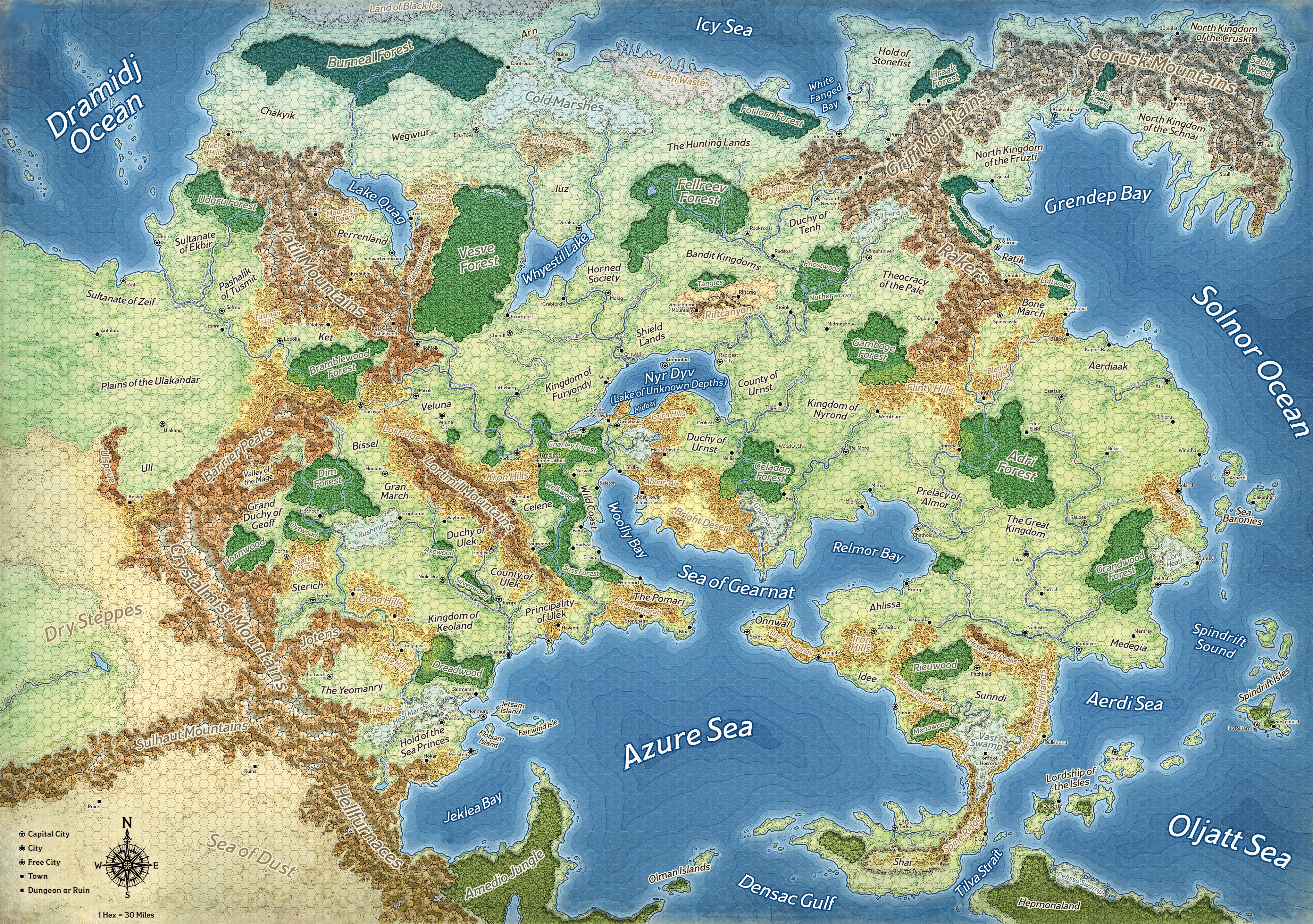The Flanaess & Other Regions
Central Flanaess
The rich soil and pleasant climate of the region between the Nyr Dyv and the Yatil Mountains—combined with healthy trade relations between these realms and their neighbors to the east, south, and west—make this a strong and prosperous region.
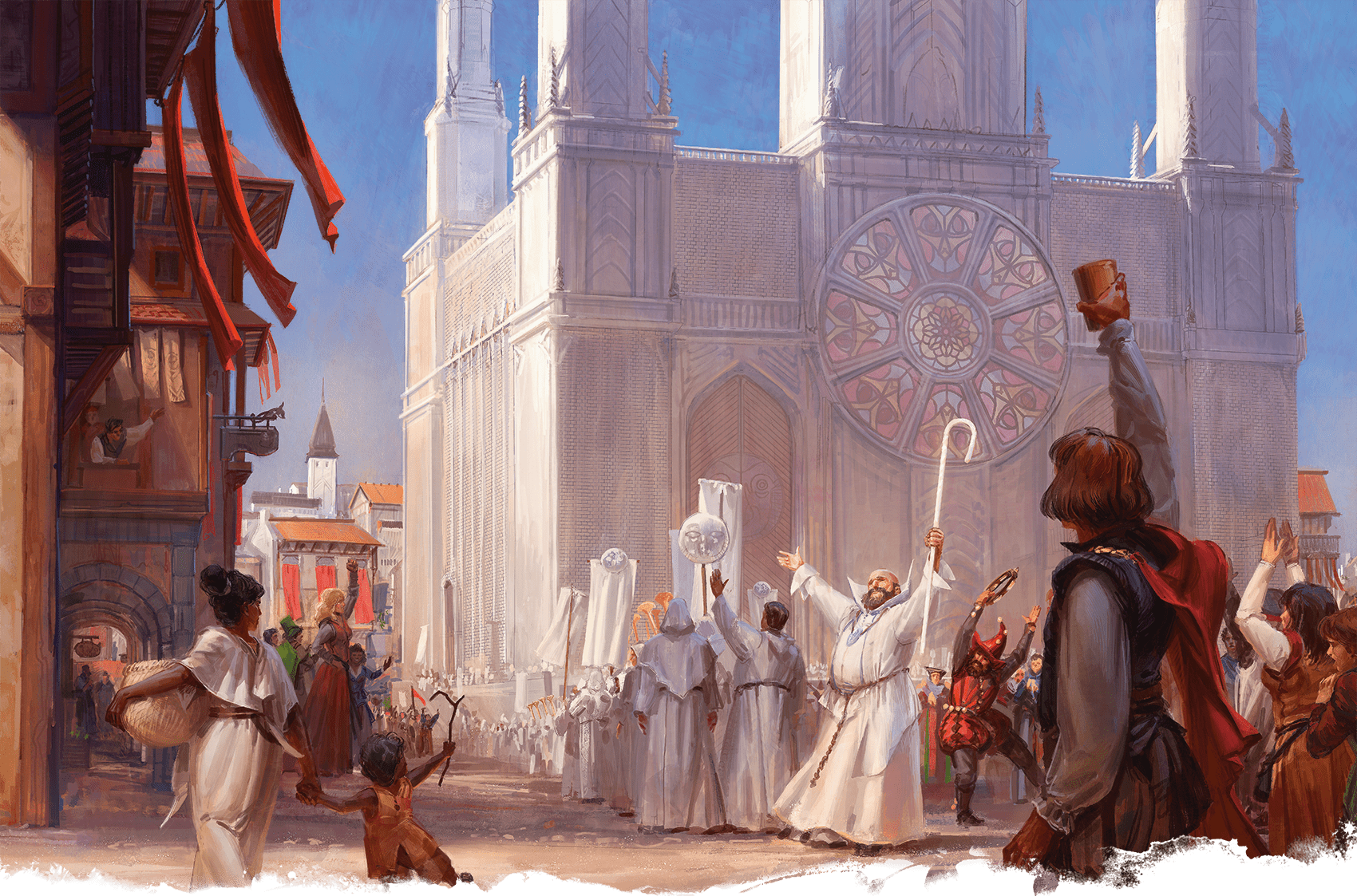
| Location | Ruler | Description |
|---|---|---|
| Celene | Queen Yolande (elf) | Elven monarchy with large gnome and halfling populations |
| Dyvers (Free City) | Magister Thymantia Gortoz (aasimar) | Important port and trading center with a powerful navy |
| Furyondy, the Kingdom of | King Belvor IV (human) | Former province of the Great Kingdom, among the first to claim independence |
| Highfolk (Free City) | Mayor Talisyr | Fortified city with large population of elves. |
| Horned Society, the | Nine hierarchs (mostly humans and hobgoblins) | Theocracy ruled by devil worshipers, supported by mercenaries enforcing their tyrannical rule |
| Iuz | Iuz (cambion demigod) | The monster-infested domain of the demonic dictator, steeped in wickedness |
| Nyr Dyv | — | The Lake of Unknown Depths; home to barge dwellers |
| Perrenland | Voorzitter Yrenda Schwartzen (human) | Fiercely independent confederation of canons |
| Pomarj, the | — | Lawless peninsula; home to bandits and marauders |
| Shield Lands, the | Various allied nobles | Independent alliance of nobles protected by the Knights of Holy Shielding, led by Knight Commander Aleshh Kaarth (dragonborn) and fortified by Furyondy and Urnst |
| Veluna, the Archclericy of | Canon Hazen (human) | Theocracy ruled by priests of Rao, a divine beacon of justice and hope |
| Verbobonc (Free City and Viscounty) | Viscountess Wilfrick Rejjin (human) | Vassal state of Veluna |
| Wild Coast, the | Various burgomasters, lord mayors, and others | Free territory with self-governing settlements; haven for outcasts and dissidents |
Central Flanaess Culture
The culture of the Central Flanaess is a result of the long imposition of the Great Kingdom’s rule over a variety of peoples living in close proximity. These peoples, by and large, share the Great Kingdom’s practical, hardworking values, and they rely on the family and local community, rather than the might of nations and armies. They have a strong egalitarian streak unlike the Great Kingdom’s strict social hierarchy, and (beyond the domains of Iuz and the Horned Society) they have little tolerance for would-be tyrants or aloof nobility. Amid a large number of free cities and confederations, the monarchies of Furyondy and Celene are far more democratic in practice than those in other regions.
Typical dress in the Central Flanaess reflects it's diversity and is influenced by many different regions and cultures around the world. The cuisine of the Central Flanaess uses rice and potatoes alongside cheese and meat that is typically boiled or roasted.
Eastern Flanaess
Once a powerful force for order and good, the Great Kingdom of Aerdy has declined over the last century to a state of utter decadence. The reigning overking—Ivid V, patriarch of the House of Naelax—is rumored to have fiendish advisers as well as a noble court infested with evil. Ruling from the Malachite Throne in Rauxes, Ivid commands an unmatched army currently embroiled in two wars at once: one against the Kingdom of Nyrond and the Prelacy of Almor, and the other against the Iron League (consisting of Idee, Irongate, the Lordship of the Isles, Onnwal, and Sunndi). To pay for these costly wars, the overking has imposed heavy taxes on his subjects, further diminishing his popularity.
Aerdiaak, Ahlissa, Medegia, and Rel Astra are provinces and fiefs of the Great Kingdom. The Sea Baronies are vassal states that provide most of the kingdom’s navy.
| Location | Ruler | Description |
|---|---|---|
| Aerdiaak | Herzog Varz Grenell (human) | North province of the Great Kingdom, ruled by a cousin of the overking. |
| Ahlissa | Herzogin Seprenna Calyn (human) | South province of the Great Kingdom, ruled by a cousin of the overking; embroiled in war with the Iron League |
| Almor, the Prelacy of | Prelate Xanther Klimstyn (human) | Theocracy ruled by a priest of Pelor who declared independence when the Great Kingdom descended into evil |
| Bone March, the | — | Fallen territory of the Great Kingdom, now held by armies from Almor and Nyrond |
| Celadon Forest | — | Ancient forest protected by druidic circles and fey |
| Flinty Hills and Gamboge Forest | — | Home to several independent communities with no great love for Nyrond or the Pale |
| Great Kingdom, the | Overking Ivid V (human) | Unspeakably evil monarchy |
| Idee | Count Vasiliek Donsten (human) | Independent fiefdom; member of the Iron League |
| Irongate (Free City) | Mayor Unthera Selvich (Dwarf) | Thriving metropolis; member of the Iron League |
| Lordship of the Isles, the | Princess Ronthal III (human) | Independent principality; member of the Iron League |
| Medegia, the See of | Holy Censor Starvik Jerel (human) | Theocratic fiefdom ruled by a priest whose power is rumored to come from pacts with archdevils |
| Nyrond, the Kingdom of | King Dunstan I (human) | Center of resistance to the Great Kingdom |
| Onnwal | The Raven of Onnwal, Zyl Grayshadow (dwarf) | Independent state; member of the Iron League |
| Pale, the Theocracy of the | Supreme Prelate Ogon Tillit (human) | Theocracy ruled by a priest of Pholtus |
| Rel Astra, City of | Constable Mayor Drax (orc) | Independent fief plotting in secret against the Great Kingdom, hoping to ally with Medegia or the Sea Baronies |
| Sea Baronies, the | Four sea barons, including High Admiral Kalashe Asperdi (human) | Independent island fiefdoms that serve as the Great Kingdom’s navy |
| Shar, the Hidden Empire of | Father of Obedience Korenth Zan (human?) | Isolated order of Suloise militants whose spies operate across the Flanaess |
| Spindrift Isles, the | The Council of Five (on the northern islands) and the Council of Seven (on the southern island) | Independent islands that keep watchful eyes on aggressive island neighbors |
| Sunndi | Steward Valenta (elf) | Independent fiefdom; member of the Iron League |
| Tenh, the Duchy of | Duchess Ehliyah Raynar III (human) | Independent fiefdom allied with Nyrond for defense against Iuz |
| Urnst, the County of | Countess Belissica Gellor (human) | Independent fiefdom |
| Urnst, the Duchy of | Duke Jalken Lorinar (human) | Independent fiefdom |
| Vast Swamp, the | — | Morass separating the Tilvanot Peninsula and Shar from the rest of the East |
Eastern Flanaess and Its Neighbors
The Duchy and County of Urnst bridge the regions of the Central and Eastern Flanaess. Once part of the Great Kingdom’s province of Nyrond, they declared their independence from the Great Kingdom and the new Kingdom of Nyrond at the same time, achieving their separation from Nyrond with minimal bloodshed. While the people of Urnst distrust the king of Nyrond, they don’t hate him like they do the overking.
The proximity of the Nyr Dyv, the Cairn Hills, and the Shield Lands means the Urnst lands can’t ignore the rising threat of Iuz or the politics of the Free City of Greyhawk. At the same time, Nyrond stands as a buffer between Urnst and the Great Kingdom, but the overking’s threat still looms. The duke and countess of Urnst believe that a united Urnst will stand more strongly against pressures from east and west, which they hope to achieve through the marriage of Countess Belissica Gellor to Byron Lorinar, eldest son of Duke Jalken Lorinar.
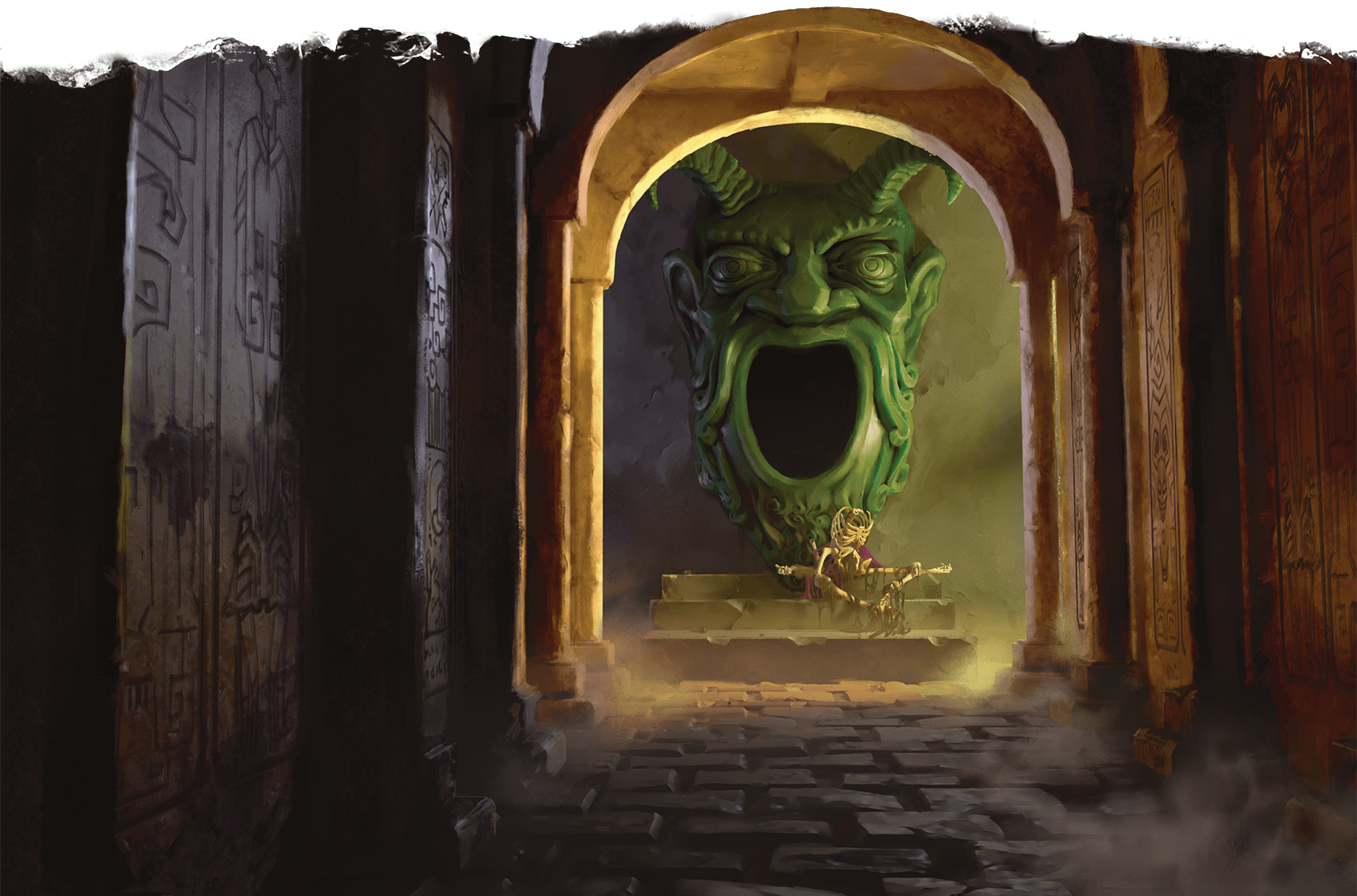
Northern Flanaess
The northern region of the Flanaess includes three distinct areas populated by different peoples: the Baklunish horse riders of the Chakyik and the Wegwiur, the Suloise people of the North Kingdoms, and the Flan nomads of the Hunting Lands.
| Location | Ruler | Description |
|---|---|---|
| Arn, the Archbarony of | Archbaron of Arn (identity unknown) | Remote and little-known region located near a ruined castle. |
| Bandit Kingdoms, the | Four to six bandit lords | Feuding kingdoms ruled by greedy bandit lords with private armies |
| Barren Wastes, the | — | Harsh, despoiled land where dragons roam and sometimes go to die |
| Chakyik | Lord Agul Krusef (human) | Land of the Tiger Nomads—horse riders with scattered trading outposts |
| Hunting Lands, the | Overlord-Protector Yhareen Sakarr (tiefling) | Home to Flan nomads, known to their neighbors as the Rovers of the Barrens |
| North Kingdom of the Cruski, the | Queen Tharla of the Cruski (human) | Fierce, seafaring berserkers of the North Kingdoms |
| North Kingdom of the Fruzti, the | King Hundgred of the Fruzti (human) | Weakest of the three North Kingdoms, having suffered great losses battling in the Bone March |
| North Kingdom of the Schnai, the | Queen Ingrid of the Schnai (human) | Strongest and most populated of the North Kingdoms |
| Ratik, the Barony of | Baron Lexnol Haarkof (human) | Former province of the Great Kingdom trying to ally with the North Kingdoms |
| Stonefist, The Hold of | King Sevvord Redbeard of the Hold (human) | Monarchy founded by a bandit leader who attracted malcontents from many nations |
| Wegwiur | Wolf-Mother Bargra Yefkos (human) | Land of the Wolf Nomads—horse riders engaged in war against Iuz |
Baklunish Nomads
The Chakyik and Wegwiur—called Tiger Nomads and Wolf Nomads, respectively, by their neighbors—are horse riders of Baklunish descent who dwell on the steppes north of the Yatil Mountains and Lake Quag. The climate in the steppes and pine forests ranges from cool to frigid. Both peoples maintain scattered trading outposts that welcome visitors from neighboring and distant lands.
The steppe nomads have a rich storytelling tradition that reinforces a strong sense of clan identity and family line within the clan. Their tales include stories not only of heroes within their clans, but also of heroic horses, and the nomads trace equine lineages as carefully as their own. These nomads maintain the traditions of their people, many of which can be traced back to the ancient Baklunish empire.
The Baklunish nomads favor bright pastel colors in gowns and robes. When traveling or at war, though, they prefer more rugged gear of leather and hide.
The North Kingdoms
Three kingdoms of related peoples occupy the Thillonrian Peninsula in the northeast of the Flanaess—a beautiful subarctic landscape of high mountains, coniferous forests, and deep fjords. The kingdoms are named for the three distinct tribal lines that inhabit them: the Cruski (whose name means “ice”), the Fruzti (“frost”), and the Schnai (“snow”).
The Schnai are strong and numerous. When Queen Ingrid of the Schnai has a mind to raid the isles of the Sea Baronies or the coasts of Aerdiaak and the Great Kingdom, she calls upon the king of the Fruzti and the queen of the Cruski to join her army. King Hundgred of the Fruzti has no choice but to honor his oath to the Schnai, while Queen Tharla of the Cruski rarely turns down a chance to attack her enemies. At other times, the Cruski raid the Fruzti, the Schnai, or the Hold of Stonefist.
As their distinct kingdoms suggest, the people of the North Kingdoms value their connection to their clan lineage. They preserve a love of learning from their distant ancestors of the Suel Imperium, and they value knowledge of the natural world as highly as they do the skills of hunting, sailing, and warfare. Their clothing includes shirts and pants made of wool, augmented with furs, capes, mittens, and warm boots. They often wear large pins, brooches, or emblems in their cloaks as a sign of wealth or accomplishment.
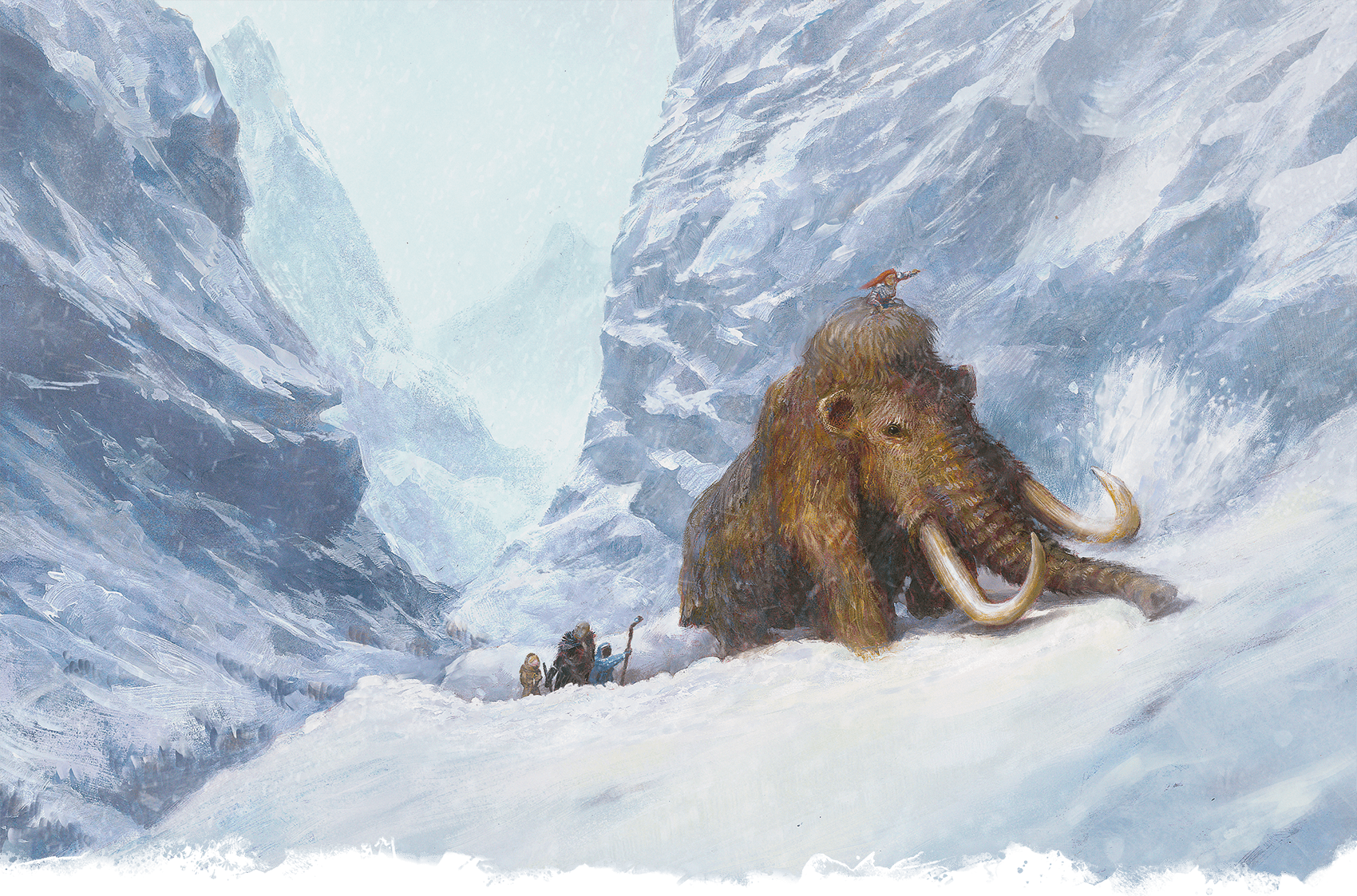
The Hunting Lands
The People of the Hunting Lands (called Rovers of the Barrens by their neighbors) have a history of raiding the outskirts of Furyondy, the Bandit Kingdoms, Tenh, and Wegwiur, which hasn’t won them many allies. The nomads’ legendary dominance of the north has faded, as the forces of Iuz and the Horned Society wage steady war against them while raiders from the Hold of Stonefist prey on the Hunting Lands farther east. Many of the Rovers’ mightiest warriors—the Wardogs—have perished in battles against all these relentless foes.
The people of the Hunting Lands value a close connection to the natural world. They view nature as an entity to be respected, not controlled, and their myths and legends teach the value of accepting nature’s bounty as a gift that evokes gratitude. They wear clothes made entirely of animal skins, including belts, capes, robes, and slippers, and decorate their skin with paints and tattoos.
Northern Flanaess and Its Neighbors
The regions of the north exist on the fringes of other regions of the Flanaess. Three realms are the primary points of intersection between the Northern Flanaess and neighboring areas.
Bandit Kingdoms. The Bandit Kingdoms is a lawless frontier between the Hunting Lands in the north, the Horned Society and the Shield Lands in the Central Flanaess, and the Duchy of Tenh in the east. No single bandit lord is powerful enough to conquer the whole territory, and the combined strength of all is often required to defend against retaliation by neighboring states for the bandit lords’ aggression. At least one of the bandit lords, Renfus the Mottled (ruler of Stoink), is wholly in the service of Iuz.
Ratik. As a former province of the Great Kingdom, Ratik rides the boundary between the northern and eastern regions of the Flanaess. Without the protection of the Great Kingdom, Ratik has been forced to defend itself against frequent raids from the North Kingdoms and the Sea Baronies, as well as attacks from mountain-dwelling monsters. Baron Lexnol Haarkof’s emissaries hope to forge an alliance with the North Kingdoms and redirect the berserkers’ aggressions toward the Hold of Stonefist.
Wegwiur. Wolf-Mother Bargra Yefkos of the Wegwiur Hordes is preoccupied with the threat of Iuz, and she meets frequently with clan leaders and Perrenlander mercenaries to strategize. The Wegwiur consider their territory to extend to the Dulsi River, so they fiercely defend the western Howling Hills from the incursion of the hideous monsters that serve Iuz. Several large battles between Wegwiur and the forces of Iuz have taken place in that area.
Old Keoland
United by their shared history as part of the ancient Kingdom of Keoland, the marches and fiefdoms between the Lortmil Mountains and the higher mountains to the west gather diverse populations of many different species in relative peace with each other. Even the long-standing feud between Keoland and the Hold of the Sea Princes might be drawing to an end under the leadership of Keoland’s current ruler, King Kimbertos Skotti. The region enjoys a warm, mild climate but faces many threats from monstrous foes.
| Location | Ruler | Description |
|---|---|---|
| Bissel, the March of | Margrave Imran Rendulkar (human) | Bone of contention between Keoland, Veluna, and Ket |
| Geoff, the Grand Duchy of | Grand Duchess Owena Blackthorn (human) | Isolated fiefdom with a long history of battling giants in the nearby mountains |
| Gran March, the | Commandant Magnus Onyxbeard (dwarf) | Nominal vassal of Keoland and ally with Bissel; the commandant is elected from among the March’s noble houses |
| Hold of the Sea Princes, the | Prince Zygmund III of Monmurg (human) | Independent oligarchy of sea traders founded by buccaneers; now a powerful naval force |
| Keoland, the Kingdom of | King Kimbertos Skotti (human) | Heart of the Old Keoland region, surrounded by friendly neighbors that swear fealty to Keoland’s monarch |
| Lortmil Mountains, the | — | Natural border between the Old Keoland region and the Central Flanaess |
| Sterich, the March of | Marquise Quercha Emondav (human) | Nominal vassal state of Keoland, but its ruler is more like a sister than a vassal to the king of Keoland |
| Ulek, the County of | Countess Lewenn Richfield (human) | Former vassal of Keoland |
| Ulek, the Duchy of | Duke Grenowin (elf) | Former vassal of Keoland with a large population of elves |
| Ulek, the Principality of | Princess Olynn Corond (dwarf) | Fiefdom with a significant navy; its princess commands the respect of many dwarves beyond Ulek |
| Valley of the Mage, the | The Mage of the Valley (identity unknown) | Secluded refuge of an ancient archmage; current inhabitants unknown |
| Yeomanry, the | Freeholder Vyndi Skyspear (goliath) | Independent republic governed by an elected freeholder |
Old Keoland Culture
Old Keoland is a diverse region of the Flanaess where different cultures have mingled for many centuries. Keolish folk often garden, maintain close family ties, have a down-to-earth nature, and love storytelling.
The clothes worn in Old Keoland tend toward loose-fitting shirts and wide-legged pants, voluminous cloaks for cold or wet weather, and sturdy boots. This region’s cuisine represents a fusion of Central Flan dishes of rice, potato, and meat with some spices and seasonings brought from the west, creating unique flavors.
Old Keoland and Its Neighbors
The long chain of the Lortmil Mountains forms a natural barrier between Old Keoland and the region of the Central Flanaess. The mountains contain some of the richest gem and precious metal deposits in Eastern Oerik. The humans, dragonborn, dwarves, gnomes, halflings, goblinoids, goliaths, and orcs that live in these mountains and their foothills are subjects of the realms that surround the mountain range, but they often band together to deal with greater threats on both sides of the mountains.
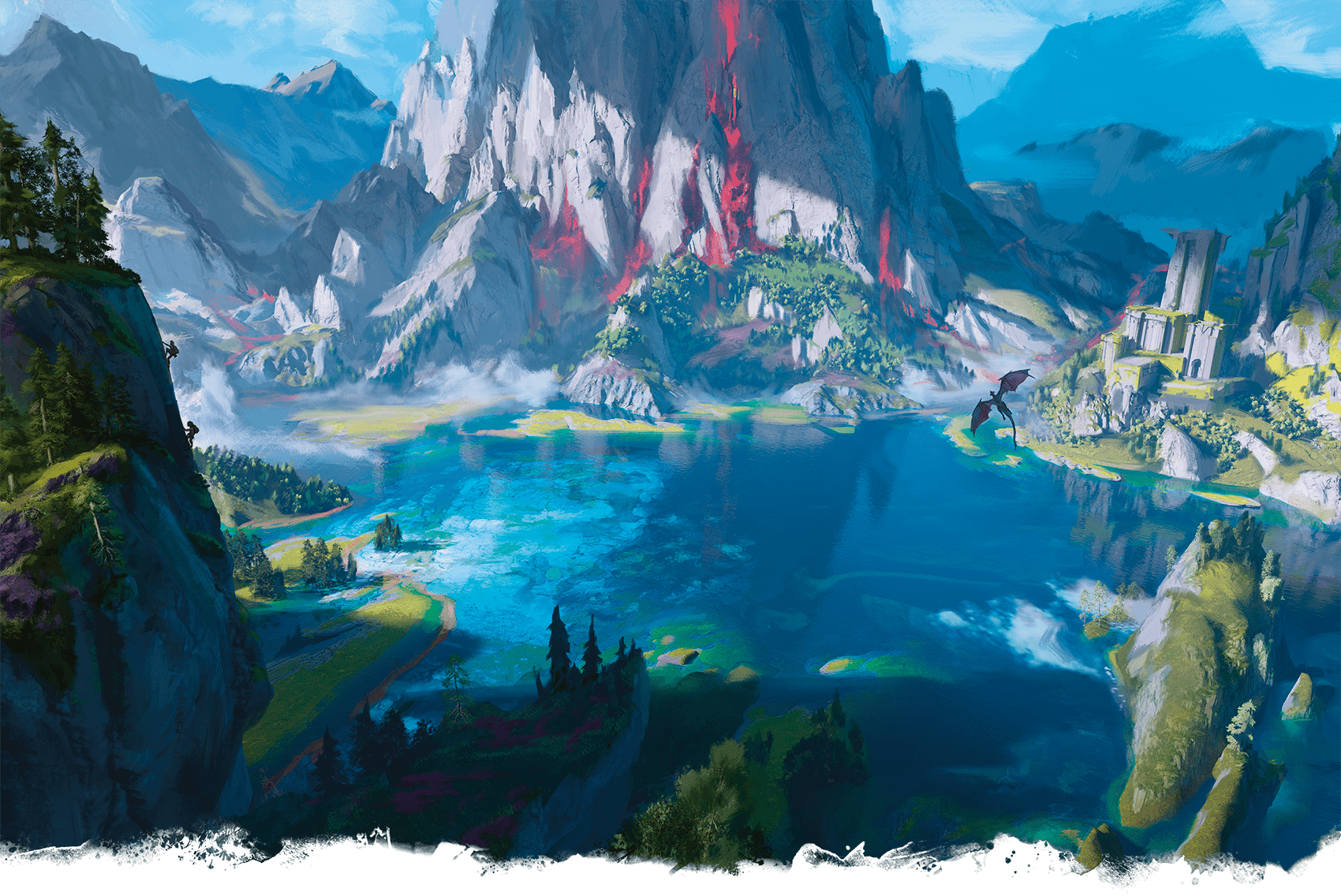
Western Flanaess
Survivors of the Invoked Devastation that destroyed the ancient Baklunish empire settled the temperate prairies, forests, and coastal lands of the Western Flanaess about a thousand years ago. Largely separated from the rest of the Flanaess by the Yatils, the Barrier Peaks, and the Crystalmist Mountains, these realms are a stronghold of Baklunish cultures.
The nations of Ekbir, Tusmit, and Zeif represent the heart of the region, and two rivers—the Blashikmund and the Tuflik—form natural borders between them. Although the nations currently enjoy peaceful relations, Tusmit profits by playing its political neighbors against each other—Ekbir against Zeif, Zeif against the Ulakandar nomads, the Ulakandar nomads against Ket, and so forth. Pasha Qharlan Sylba of Tusmit is careful to keep his name well clear of these schemes so he can avoid embroiling Tusmit in open warfare. But Tusmit’s spies are currently causing discord by spreading rumors that Zeif is planning to invade Ekbir. Ekbir’s sultan believes the rumors are true and is readying his army.
Sultan Naxas Murad of Zeif is a reclusive man, a great philosopher, and a stern father figure to the rulers of Ekbir and Tusmit. Over the years, advisers and family members have urged Naxas to expand Zeif’s borders through military conquest, but he refuses to do so, citing failed land grabs by kingdoms through history as proof that imperial expansion across the Flanaess rarely ends well.
| Location | Ruler | Description |
|---|---|---|
| Dry Steppes, the | — | Desert where the Baklunish empire once stood |
| Ekbir, the Sultanate of | Sultan Xargun II (aasimar) | Monarchy in an uneasy peace with its neighbors, bracing for a rumored invasion from Zeif |
| Ket | Beygraf Zoltana Lhaz (human) | Crossroads region |
| Plains of the Ulakandar, the | Various Ulakandar clan leaders | Land of the Ulakandar nomads, who roam between the Dry Steppes and the border of Zeif |
| Sea of Dust, the | — | Wasteland where the Suel Imperium once stood |
| Tusmit, the Pashalik of | Pasha Qharlan Sylba (human) | Monarchy profiting by playing its neighbors against each other |
| Ull | Orakhan Drasika Borinok (human) | Independent fiefdom founded by Ulakandar nomads who settled the land |
| Zeif, the Sultanate of | Sultan Naxas Murad (human) | Monarchy ruled by a reclusive philosopher who resists his advisers’ call to imperial expansion |
Western Flanaess Culture
The culture of the Western Flanaess preserves many of the ways and traditions of the ancient Baklunish empire. Enormous value is placed on the virtues of hospitality and generosity, particularly almsgiving and pious donations to temples and clergy. Since the fall of their ancient empire, the people of the Western Flanaess have demonstrated more interest in trade—as a way of amassing power and wealth, but also as a means of connecting and coexisting with neighbors—than in imperial expansion or military domination.
The clothing favored by the people of the Western Flanaess features bright patterns in vibrant colors, worn in flowing gowns, robes, and long coats worn with breeches. Their cuisine is renowned for its rich flavors and spiciness.
Western Flanaess and Its Neighbors
Ket is the crossroads between the Western Flanaess and the rest of the continent, nestled between the Yatil Mountains and Barrier Peaks. Though it was founded by Baklunish settlers, Ket’s proximity to both Bissel (and the lands of Old Keoland) and Veluna (and the Central Flanaess) makes it a vibrant, multicultural land rich from extensive trade. Its culture reflects the breadth of its trade, including sizable populations of dragonborn and tieflings and displaying a fusion of Baklunish and Oeridian influence. This mixture is visible in the title of its ruler, which is a combination of a Baklunish title (bey) and an Oeridian one (graf). The beygraf is a noble chosen by the lords of Lopolla’s wealthiest, most influential families. Many of these lords also serve as generals in the Kettish military. The current beygraf, Zoltana Lhaz, is a skilled diplomat who so far has balanced the interests of different forces both inside her nation and among her neighbors.

